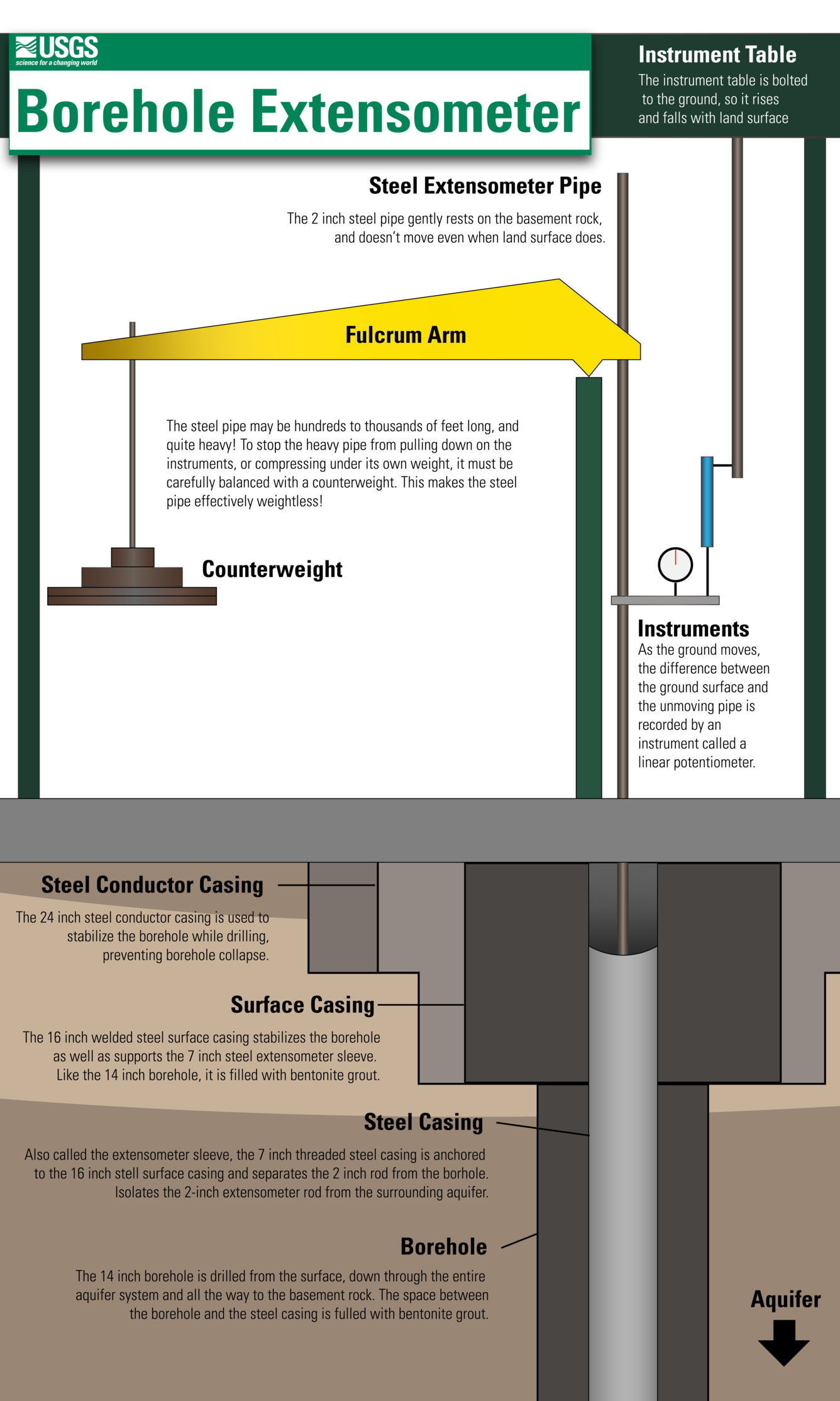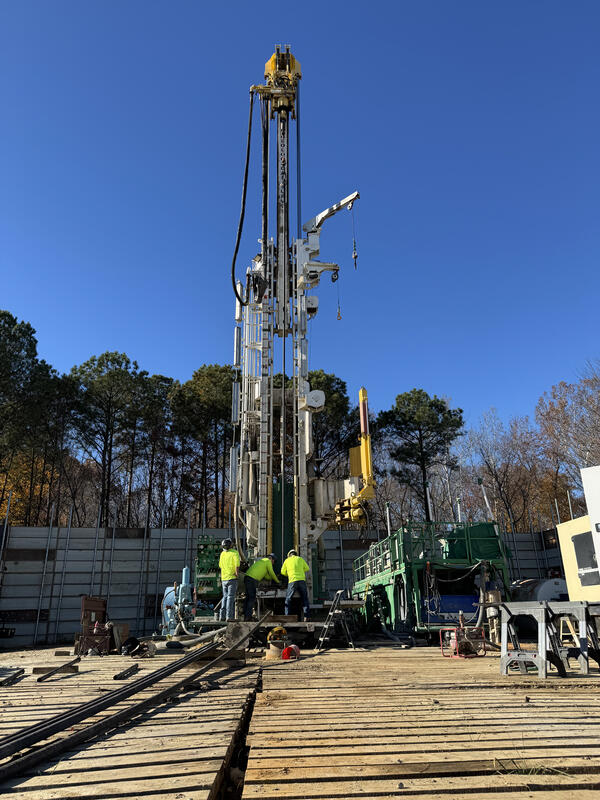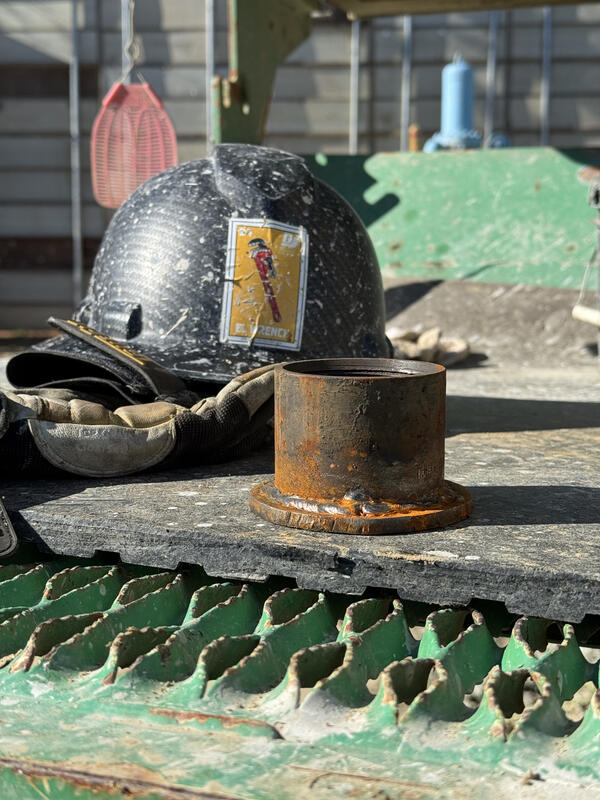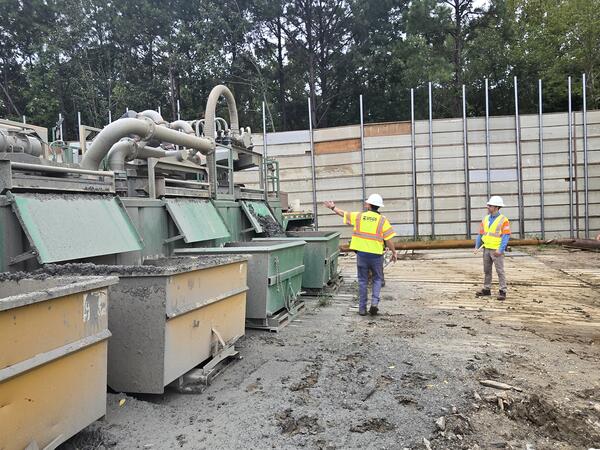Borehole Extensometer
Detailed Description
Borehole Extensometer
Borehole extensometers are highly sensitive instruments which measure aquifer compaction. This infographic explains the various parts of a borehole extensometer, and is modeled after the USGS extensometer at Nansemond, Virginia.
Instrument Table: The instrument table is bolted to the ground, so it rises and falls with land surface.
Steel Pipe: The steel pipe is anchored to the basement rock and doesn't move even when the land surface does.
Fulcrum Arm & Counterweight: The steel pipe may be hundreds to thousands of feet long, and quite heavy! To stop the heavy steel pipe from pulling down on the instruments, or compressing under its own weight, it must be carefully balanced with a counterweight. This makes the steel pipe effectively weightless!
Instruments: As the ground moves, the difference between the ground surface and the unmoving steel pipe is recorded by an instrument called a linear potentiometer.
Borehole: The borehole is drilled from the surface, down through the entire aquifer system and all the way to the basement rock. The steel pipe is anchored at the bottom of the borehole.
Sources/Usage
Public Domain.
Related
The Virginia Extensometer Network
Land Subsidence on the Virginia Coastal Plain
Subsidence Infographics
Virginia Extensometer Network
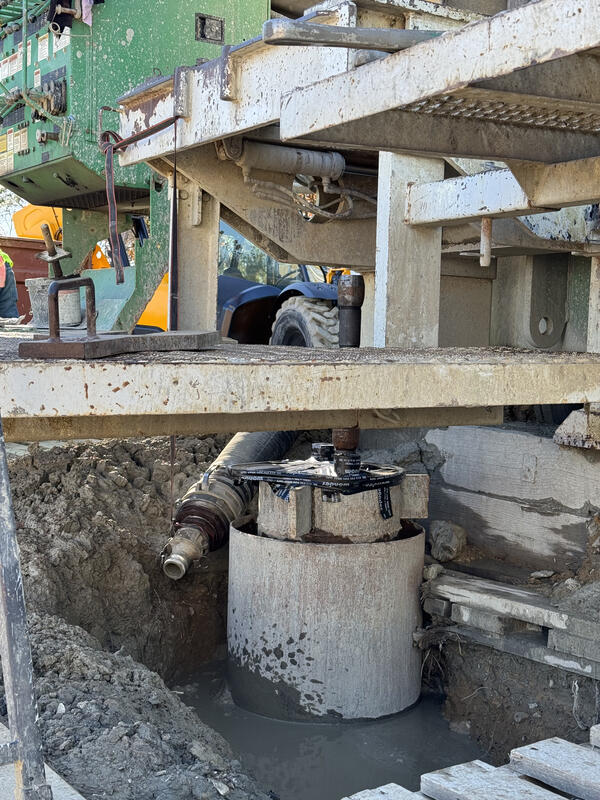




Nansemond Extensometer Schematic
This schematic shows the Nansemond borehole extensometer ( USGS 365337076251606 59D 39) in cutaway profile. A 12 inch borehole extends down 2000.5 feet, with the last 41.5 feet being a cement base for the 2 inch steel extensometer pipe. Surrounding the steel 2-inch extensometer pipe is a 7 inch steel casing with 4 slip joints, and surrounding that casing is bentonite grout. The borehole widens at...
Related
The Virginia Extensometer Network
Land Subsidence on the Virginia Coastal Plain
Subsidence Infographics
Virginia Extensometer Network





Nansemond Extensometer Schematic
This schematic shows the Nansemond borehole extensometer ( USGS 365337076251606 59D 39) in cutaway profile. A 12 inch borehole extends down 2000.5 feet, with the last 41.5 feet being a cement base for the 2 inch steel extensometer pipe. Surrounding the steel 2-inch extensometer pipe is a 7 inch steel casing with 4 slip joints, and surrounding that casing is bentonite grout. The borehole widens at...


